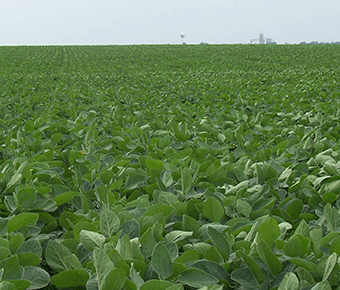By Sotirios Archontoulis

When pulled from the oven it is a delicious masterpiece; a light, fluffy desert in vanilla, chocolate or angel food flavors. But how does it get to that place?
A cake is a mixture of ingredients that works together to produce something better than what they can be individually. Eggs, milk, flour and the other ingredients that make up a cake are fine on their own, but after combined and then baked, they turn into something they could never be on their own.
Think of crop modeling in much the same way, says Sotirios Archontoulis, an assistant professor of agronomy at Iowa State University. The model syntheses soil, climate and management information to create something very useful to farmers – individualized yield projections.
A computerized tool that answers questions
Put another way, crop modeling is a computerized tool to answer questions farmers might have about their field. How much water is in the ground? Does the field have enough nitrogen or is it short? What are yields going to look like? And, most importantly, to answer what-if hypothetical questions that farmers commonly have and are impossible to answer without a computer tool. What if more nitrogen had been used? Or a different cultivar?
It might be too late to run an experiment, but with the crop models you can go back in time.
“Going back to the 1960s when the first model was developed, it was just a component of the system,” said Archontoulis. “One group in the Netherlands, led by Professor Cornelis De Wit, computerized all science knowledge and built a model. Then another group in the United States developed another model for soils, and another for nitrogen, and another for water. Starting in the early 1990s, individual crop and soil models were connected to form the cropping systems models, which can answer more complex questions and address the interactions between crop, soils, atmosphere and management.
Historically, crop modeling was mostly used for research purposes and much less to address practical (real-life) questions. Over the last few years, however, web-based tools that simplify the use of these models and digital soil and weather databases that provide model input parameters have become available. As a result, the potential for using models to assist with real-life practical problems is growing rapidly. The next challenge to model application across different regions and cropping systems is to determine their prediction accuracy and improve the science behind the models.
Crop modeling demonstrations at Farm Progress Show
While modeling is widely available and has been reliably tested by both private companies and research institutions like Iowa State, the use of models is still trying to gain traction among a large number of farmers. Crop modeling will be one aspect of digital agriculture on display at the Iowa State University exhibit at the Farm Progress Show near Boone Aug. 30-Sept. 1.
“These models are still in their infancy from a use standpoint,” said Mark Licht, cropping systems agronomist with Iowa State University Extension and Outreach. “Farmers are somewhat reluctant to fully commit to the models but we have better models then we have had in the past, so that’s helping.”
Researchers will be on hand at the Farm Progress Show to visit with producers about the use of crop modeling. With crop modeling being greeted with skepticism by farmers, being completely transparent about the data that goes into the models is helping Iowa State researchers convince producers to implement the practice into their planning practices.
“We are trying to be very transparent in what we are doing,” Licht said. “The more open we are, the more accepted it will be and begin to get more people comfortable using the data. If we can show people what the models are doing and how they are working that can help them gain acceptance.”
Researchers are also getting closer to being able to implement specific field management changes during the season thanks to information provided by crop models. Being able to better monitor and control the application of nitrogen onto the field can help control the amount of nutrients lost from those fields.
“We are starting to get there,” said Licht. “We aren’t quite to the point where we can make in-season adaptive management decisions, but I do see that as something we will be able to do in the near future. We would have an idea of how much nitrogen a plant has taken up, how much the plant has mineralized and how much is still available. That would allow us to get out into the field with additional side dress applications if we think we are going to be short on nitrogen. We are on the cusp of getting to that point and the same thing can also be done with water management.”